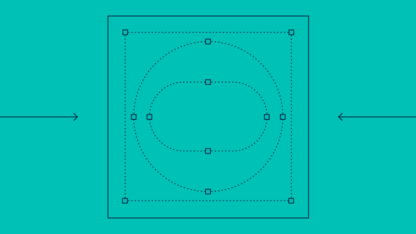Risk monitoring focuses on evaluating identified risks to ensure they remain within acceptable thresholds, helping businesses navigate uncertainties and maintain a competitive edge.And the stakes are high — a September 2024 survey of European banks revealed that 79% of respondents identified risk monitoring as critical for regulatory compliance and operational resilience.
Similarly, a Forrester report found that 41% of organizations faced three or more critical risk events in the past year. These insights underscore the importance of consistent oversight and proactive measures in today’s volatile business environment.
What Is Risk Monitoring?
With risk monitoring, businesses map out and track their current risk exposure, including the implemented risk management system and any other activities that inform decisions. It is a key component of determining individual risk appetites — in other words, the decision of how much risk can be tolerated — and often leads to the creation of Key Risk Indicators (KRIs).
Business risk monitoring occurs at the final stage of the risk management process, making it essential for this activity to be ongoing and regularly reviewed. This ensures that risk responses are implemented promptly and remain effective in addressing emerging challenges.
While a dedicated risk team often oversees the monitoring process, it’s also common for compliance teams, anti-fraud teams or trust and safety teams to take on this responsibility, depending on the organization’s structure and specific needs.
How Important Is Risk Monitoring?
Risk monitoring is crucial for organizations to understand the risks that impact their operations and profitability and to identify the most effective strategies for managing them.
More specifically, effective risk monitoring:
- Minimizes risks by identifying them early and ensuring robust defenses are in place to prevent potential issues.
- Mitigates impact by enabling swift and decisive action when risks materialize.
- Provides a comprehensive view of the risk landscape, allowing companies to act proactively rather than reactively.
- Promotes accountability by defining clear steps for risk mitigation and tracking their execution.
- Fosters transparency and builds trust among employees, stakeholders and partners.
- Leverages past experiences by analyzing historical events to improve future risk mitigation strategies.
- Supports growth by reducing losses associated with risks, from natural disasters to fraudulent activities, enabling the organization to focus on expansion.
Incorporating risk monitoring into an organization’s operations can help safeguard assets, improve decision-making and build resilience.
How Does Risk Monitoring Fit Within the Risk Management Process?
Risk management is a complete framework, and the monitoring part usually takes place once a strategy Risk management is a comprehensive framework, and the monitoring phase typically begins after a strategy has been established. Once an organization implements an action plan to address risks, the team can then monitor its effectiveness and impact.
Generally, the risk management process follows these 4 key steps:
Identification
This initial step involves recognizing potential risks that could impact an organization’s objectives, operations, or reputation. Effective risk identification requires input from multiple departments, thorough data analysis and a proactive mindset to anticipate emerging threats.
Assessment
Once risks are identified, they must be analyzed to understand their likelihood and potential impact. The goal is to prioritize risks based on their severity and probability, ensuring that resources are allocated efficiently to address the most critical issues.
Risk handling
After assessment, organizations develop strategies to manage or mitigate identified risks. This stage involves creating actionable plans, assigning responsibilities, and implementing controls to ensure risks are managed effectively.
Monitoring and review
Regular reviews, supported by data and key risk indicators (KRIs), help organizations adjust their approach as circumstances change. This ongoing process ensures that the risk management framework remains dynamic, proactive and aligned with the organization’s goals.
This is where key risk indicators become invaluable. These concrete numbers help measure and monitor the success (or failure) of a risk strategy.
Risk monitoring can be handled by the entire risk management team or assigned to specific roles. Depending on the organization, this responsibility might fall to the payments team, content moderation team or compliance team, as risk often presents itself differently across departments.
Take your risk management strategy to the next level — learn how to leverage key risk indicators (KRIs) for effective fraud detection and prevention.
Read our guide
What Are the Different Types of Risk Monitoring?
Risk monitoring can be performed continually, regularly or ad hoc. Its frequency may depend on the kind of monitoring your company must perform:
- Voluntary risk monitoring: When the risk monitoring process isn’t legally required but is a key part of the risk management strategy.
- Mandatory risk monitoring: Companies may be legally required to monitor risk based on the industry they operate in. Transaction monitoring, for instance, can be considered a form of mandatory risk monitoring that banks and financial institutions must perform to remain compliant with AML regulations.
Assessing the Level of Risk Monitoring Required
Every organization has a unique tolerance for risk, as operating without any risk is impossible. This tolerance, often referred to as risk appetite, is typically defined by upper management, shareholders, and other stakeholders. It serves as the foundation for determining the appropriate level of risk monitoring required for the organization.
Risk appetites vary widely. Some risks may be acceptable in certain areas of activity, while others are viewed as critical to mitigate or prevent entirely. Understanding these distinctions is key to tailoring your risk-monitoring approach.
Generally, less intensive risk monitoring results in slower adjustments to risk strategies and mitigation efforts, making it suitable for stable environments with lower risk exposure. Conversely, more intensive monitoring can yield faster results but may disrupt operations due to its rigorous nature. Organizations must strike a balance, considering their risk tolerance, operational priorities and the resources available when deciding the ideal level of monitoring to implement.
How Does Risk Monitoring Impact Organizations?
Risk monitoring is a resource-intensive process that requires ongoing input from relevant teams to measure, assess, and optimize risk strategies. Manually monitoring risks can quickly drain resources, which is why many organizations turn to third-party software solutions. These tools allow teams to focus on strategic decision-making rather than the technical challenges of developing and maintaining in-house systems.
For example, a team tasked with monitoring transactions to avoid anti-money laundering (AML) fines may benefit significantly from deploying third-party transaction monitoring software. Such solutions streamline processes, improve accuracy, and ensure compliance with regulations, reducing the operational burden.
A well-defined and communicated risk monitoring plan further enhances the process by promoting transparency and fostering continuity across teams. By clearly outlining responsibilities and procedures, organizations can ensure that risk monitoring becomes an integral, seamless part of their operations.
Risk Monitoring Example: Banking Industry
Risk varies significantly by industry, but anti-money laundering (AML) provides a clear example of risk monitoring in the banking sector. Banks, digital banks, and other financial institutions are required to prevent money laundering and financial terrorism as part of strict regulatory mandates.
Using the risk management framework of identifying, assessing, treating, and monitoring risk, here’s how AML risks might be handled:
- Banks must understand how money launderers might exploit their products or services while ensuring compliance with regulations in every market where they operate.
- The primary risk for banks is non-compliance with government regulations, which can result in significant fines, reputational damage, and prolonged legal challenges..
- To treat the risk, banks should consider deploying AML software and assembling a dedicated compliance team to meet the regulatory requirements.
- The software should provide detailed insights, such as the number of users flagged or blocked due to AML concerns. Additionally, generating reports on false positive and false negative rates enables the team to fine-tune detection rules and adjust the stringency of anti-money laundering protocols.
A key aspect of AML risk monitoring is reviewing transactions that exceed certain thresholds. It’s also valuable to analyze the rates of transactions that were declined, flagged for review, or accepted. Identifying anomalies in these metrics can provide critical insights, enabling you to refine your risk strategy and enhance its effectiveness over time..
Learn how transaction monitoring software works and get key tips to enhance the detection of suspicious activities and strengthen your business security.
Read here
Risk Monitoring Tools and Techniques
Risk monitoring is only possible if you have data about your risk strategy and challenges. The two risk mEffective risk monitoring requires accurate data on your risk strategies and challenges. Organizations typically use two primary methods: continuous real-time monitoring and regular reviews. Most companies combine these approaches to ensure their risk strategies remain effective.
Key techniques for risk monitoring include:
- Risk assessment and reassessment: Periodically evaluating risks allows organizations to draw actionable insights and refine their strategies based on the monitoring process.
- Risk auditing: Audits evaluate existing responses and defenses, identifying areas that need updates or improvements to remain effective.
- Trend analysis: Analyzing risk trends and deviations from expected results helps organizations flag urgent issues and refine processes proactively.
- Risk responses: These are predefined actions triggered when a risk is identified or crosses a set threshold, forming the foundation of a robust risk management strategy.
- Risk transfer: This involves shifting risk to external parties or internal departments. For example, insurance policies allow third parties to assume specific risks in exchange for premiums.
Beyond these techniques, specialized tools and risk management software tailored to industry-specific risks are invaluable. For instance, fraud prevention software is often used to address risks related to fraud and identity theft.
By leveraging these methods and tools, organizations can ensure their risk monitoring processes remain dynamic, efficient, and aligned with their strategic goals.
How to Use SEON for Risk Monitoring
Bring fraud insight into AML investigations to make informed decisions faster — SEON offers powerful tools to safeguard your business while maintaining compliance and operational efficiency.
- Gain insights into customer behavior with digital footprint analysis, device intelligence and continuous user activity monitoring to identify suspicious patterns and prevent fraud.
- Evaluate user activities and transactions with dynamic risk scoring that uses custom rules and machine learning to flag high-risk events.
- Prevent fraud in real time with SEON’s instant response system, designed to block fraudulent activities, prevent account takeovers and safeguard transactions seamlessly.
- Ensure compliance effortlessly — SEON actively identifies and intercepts outgoing payments exceeding AML thresholds or directed to sanctioned individuals or entities.
- Leverage machine learning algorithms to mitigate risks faster. SEON offers transparent whitebox machine learning to recommend new tules and a powerful blackbox algorithm that will help you spot patterns the human eyes can’t.
By keeping fraudsters and cybercriminals at bay, SEON helps reduce overall risk, allowing your business to operate securely and with greater stability.
Rapidly reduce fraud rates in your business with SEON and real time data enrichment and advanced APIs.
Ask an Expert
FAQs
Monitoring risk involves having access to the right business data and a clear risk strategy in place. Most companies will rely on KRIs or Key Risk Indicators to monitor risk and measure the success of their risk strategies.
Not exactly. Risk monitoring refers to having a clear overview of the risk landscape in your sector and for your organization, while transaction monitoring is a more set-in-stone practice, where financial transactions are monitored in certain sectors, for AML reasons. However, you may have also heard of risk-based transaction monitoring, which is transaction monitoring informed by risk factors.
Risk management is a key element of a company’s global strategy, requiring skills to gain a holistic view across departments, such as collecting data and connecting it to business practices, understanding interdepartmental interactions when risks overlap, and having a clear grasp of the business model to ensure relevant risks are addressed. Essential tools and features vary by risk factors, but the ability to record and log data is indispensable.
You might also be interested in:
- SEON: Best Practices for User Activity Monitoring
- SEON: What Is Transaction Monitoring in AML & How to Set It Up
Sources
- Ropes & Gray: Global Risk Management Report
- Marsh & MacLennan: 2019 Global Cyber Risk Perception Survey








